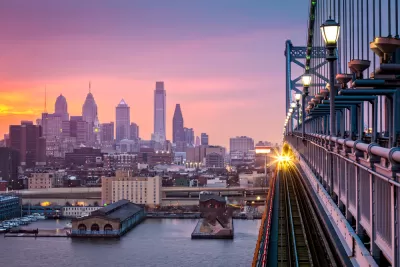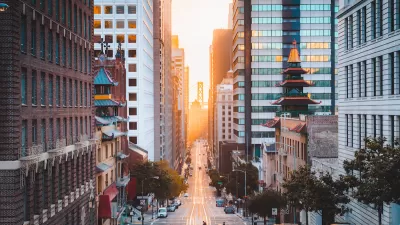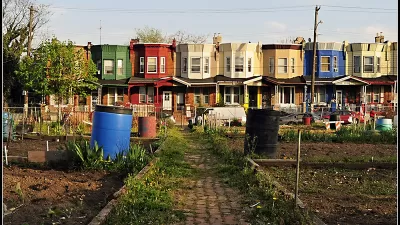An opinion piece points out the inequities of growth in contemporary Philadelphia.

An opinion article by Paul R. Levy, written for the Philadelphia Inquirer, calls attention to the dichotomy of growth in Philadelphia—it's a story that will sound familiar in many other cities around the country.
On one hand, "Philadelphia is enjoying its longest economic expansion of the last 50 years, adding 55,100 jobs since 2010, growing in all but one year since 2005." Record jobs have been added around the city, with jobs and investment centered around Center City, but with help from University City, the Navy Yard, and Temple's campuses, according to Levy.
On the other hand, Philadelphia has a 25.7 poverty rate, which places it among the highest rates for large cities in the United States. "The downtown story is about millennials and empty-nesters moving in, families having children," writes Levy. "But in many other neighborhoods, working and middle-class families still leave for the suburbs."
A Downtown-centric revival will sound familiar in Detroit and Cleveland, for instance, where rising job growth and development investment tides have not yet lifted all boats. As levy admits, it's also the story of Dickens’ Tale of Two Cities. In Philadelphia, writes Levy, "[the] story is not a tale of two cities; it’s a tale of one city not growing fast enough to address problems we’ve inherited, when we can count less on higher levels of government for help."
FULL STORY: Sure, Philly is growing. But not fast enough | Opinion

Manufactured Crisis: Losing the Nation’s Largest Source of Unsubsidized Affordable Housing
Manufactured housing communities have long been an affordable housing option for millions of people living in the U.S., but that affordability is disappearing rapidly. How did we get here?

Americans May Be Stuck — But Why?
Americans are moving a lot less than they once did, and that is a problem. While Yoni Applebaum, in his highly-publicized article Stuck, gets the reasons badly wrong, it's still important to ask: why are we moving so much less than before?

Using Old Oil and Gas Wells for Green Energy Storage
Penn State researchers have found that repurposing abandoned oil and gas wells for geothermal-assisted compressed-air energy storage can boost efficiency, reduce environmental risks, and support clean energy and job transitions.

Updating LA’s Tree Rules Could Bring More Shade to Underserved Neighborhoods
A new USC study finds that relaxing Los Angeles’ outdated tree planting guidelines could significantly expand urban tree canopy and reduce shade disparities in lower-income neighborhoods, though infrastructure investments are also needed.

California's Canal Solar Projects Aim to Conserve Resources and Expand Clean Energy
California’s Project Nexus has begun generating electricity from solar panels installed over irrigation canals, with researchers and state agencies exploring statewide expansion to conserve water and boost clean energy production.

HHS Staff Cuts Gut Energy Assistance Program
The full staff of a federal program that distributes heating and cooling assistance for low-income families was laid off, jeopardizing the program’s operations.
Urban Design for Planners 1: Software Tools
This six-course series explores essential urban design concepts using open source software and equips planners with the tools they need to participate fully in the urban design process.
Planning for Universal Design
Learn the tools for implementing Universal Design in planning regulations.
Heyer Gruel & Associates PA
City of Moreno Valley
Institute for Housing and Urban Development Studies (IHS)
City of Grandview
Harvard GSD Executive Education
Salt Lake City
NYU Wagner Graduate School of Public Service
City of Cambridge, Maryland




























